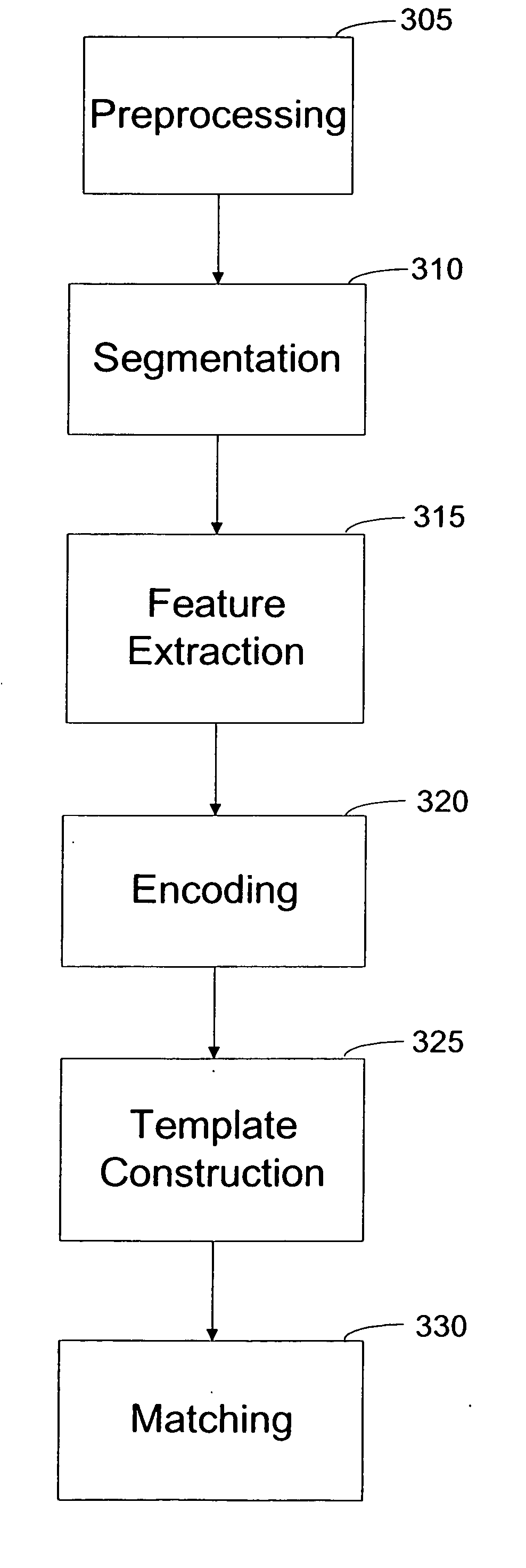Invariant radial iris segmentation
a radial iris and variable technology, applied in the field of biometric recognition, can solve the problem that the encoded scheme does not rely on the accurate segmentation of the outer bounds, and achieve the effect of improving the biometric algorithm
- Summary
- Abstract
- Description
- Claims
- Application Information
AI Technical Summary
Benefits of technology
Problems solved by technology
Method used
Image
Examples
Embodiment Construction
[0022] A leading concern of existing biometric systems is that individual features which identify humans from others can be easily missed due to the lack of accurate data acquisition or due to deviations in operational conditions. During the past few years, iris recognition has matured to a point that allows it to compete with more common biometric means, such as fingerprinting. However, inconsistencies in acquisition conditions of iris images often leads to rejecting valid subjects or validating imposters, especially under uncontrolled operational environments, such as environments where the lighting is not closely controlled. In contrast, under controlled conditions, iris recognition has proven to be very effective. This is so because iris recognition systems rely on more distinct features than other common biometric means, providing a reliable solution by offering a more discriminating biometric.
[0023]FIG. 1 shows a scanned eye image with the borders identified according to conv...
PUM
 Login to View More
Login to View More Abstract
Description
Claims
Application Information
 Login to View More
Login to View More - R&D
- Intellectual Property
- Life Sciences
- Materials
- Tech Scout
- Unparalleled Data Quality
- Higher Quality Content
- 60% Fewer Hallucinations
Browse by: Latest US Patents, China's latest patents, Technical Efficacy Thesaurus, Application Domain, Technology Topic, Popular Technical Reports.
© 2025 PatSnap. All rights reserved.Legal|Privacy policy|Modern Slavery Act Transparency Statement|Sitemap|About US| Contact US: help@patsnap.com



